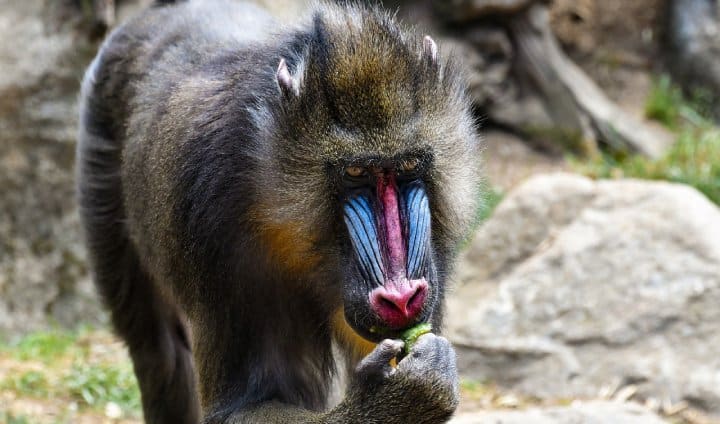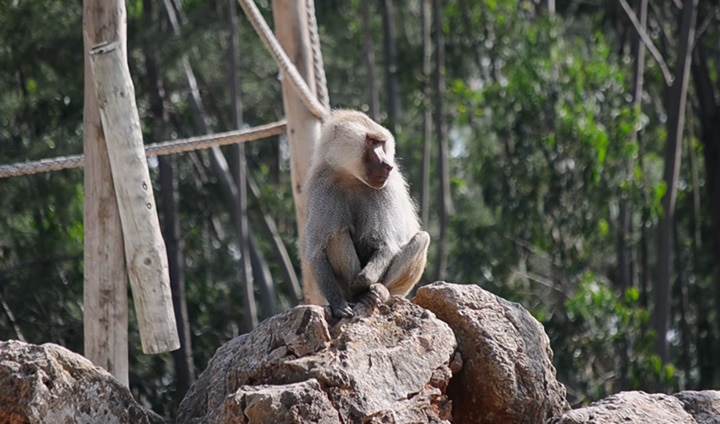The mandrill (Mandrillus sphinx) is a primate of the Cercopithecidae family of the “Old world monkeys“, closely related to the baboons and even more closely related to the drill. Both the mandrill and the drill were once classified as baboons in the genus Papio, but recent research has determined that they should constitute an independent genus, Mandrillus.
Habitat: Rainforests in Gabon, Cameroon, Equatorial Guinea and Congo, and can occasionally be seen in savannah areas or even agricultural areas.
Diet: Omnivorous. Wide variety of plants and fruits, supplemented by animals such as insects, eggs, birds and other small vertebrates (mice or toads).
Reproduction: Viviparous. Both females as males reach sexual maturity at about 4 years, the latter often abandoning their natal group to join other groups. Females can reproduce every 18 months (only one offspring). When the young are born, they cling to the mother’s bellies, moving to their back when they grow and become heavier.
Behaviour: Live in social groups that are very characteristic for their dimensions, among 600-840 individuals. Each group has a dominant male that, when it reaches its position at the top of the hierarchy, undergoes physiological changes such as increased testosterone and brightness of its colors. Use a variety of calls and body and facial expressions to communicate with each other, and both males and females have a sternal gland in the chest, which is used to mark territory or objects with odor, and have long canine teeth that they bare as a show of aggression.
Conservation: Classified as Vulnerable (IUCN) and in Appendix I of CITES. The destruction of habitat, and above all commercial hunting, are the main causes of their disappearance in the wild.
Kingdom: Animalia
Phylum: Chordata
Class: Mammalia
Order: Primates
Suborder: Haplorhini
Infraorder: Simiiformes
Family: Cercopithecidae
Genus: Mandrillus
Species: M. sphinx
Height: 75-95 cm (male), 55-66 cm (female)
Weight: 30-33 kg (male), 12-13 kg (female)
Lifespan: 25 years (in the wild), up to 40 years in captivity



